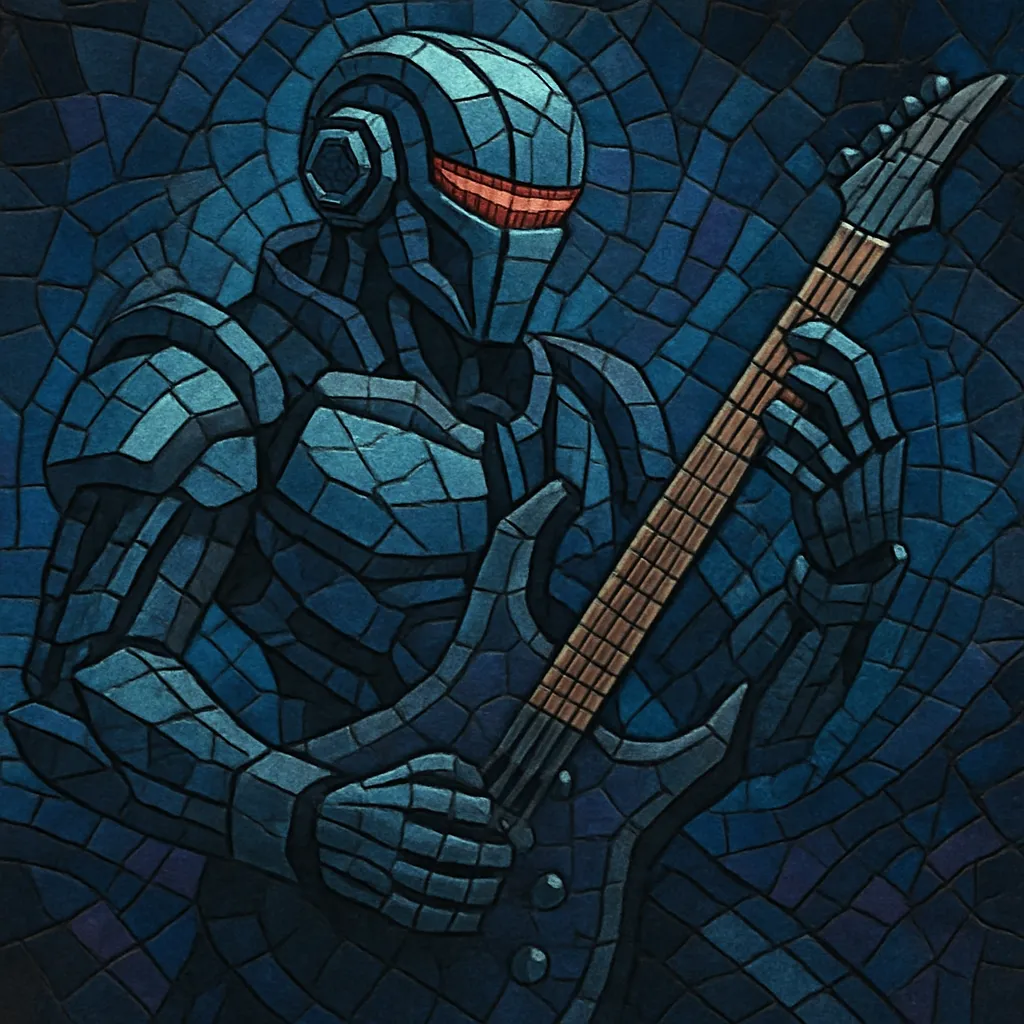Cyber metal is a fusion of industrial metal’s machine-like riffing with electronic music’s synthetic textures, sequencers, and cyberpunk aesthetics.
It typically features tightly gated, down‑tuned guitars, precision double‑kick patterns (often reinforced with drum machines), and an array of synths ranging from EBM basslines to trance leads and cinematic pads. Vocals alternate between aggressive harsh styles and processed cleans or vocoder for a futuristic feel. Lyrical themes revolve around AI, dystopia, transhumanism, surveillance, and human–machine conflict, presented with a cold, high‑tech production sheen.
Sonically, it bridges metal’s rhythmic punch and heaviness with techno/trance momentum and electro‑industrial sound design, creating a distinctly “mechanized” atmosphere.
Industrial metal pioneers laid the groundwork by fusing metallic riffing with programmed drums and electronics. In the United States, Fear Factory’s mechanized precision and dystopian narratives became a key template: surgically tight palm‑muted riffs, triggered kicks, and a cold, futuristic mix. At the same time, European industrial and electro‑industrial scenes (EBM, electro‑industrial) provided the sequenced basslines, samples, and synthetic textures that would become hallmarks of the cyber aesthetic.
By the late 1990s, bands began leaning explicitly into cyberpunk themes and electronic integration. Norway’s The Kovenant (on Animatronic) and Red Harvest pushed an icy, sci‑fi industrial extremity; in the 2000s, Switzerland’s Sybreed self‑identified as “cyber metal,” codifying the term with pneumatic grooves, syncopated chugs, and EDM‑flavored synths. Parallel developments included the rise of trance and techno‑influenced metal across Europe and Japan, with artists adopting vocoders, side‑chained pads, and four‑on‑the‑floor passages amid heavy guitars.
Affordable digital production tools accelerated the style’s expansion. Acts like Mechina and Neurotech emphasized widescreen, cinematic orchestration atop cybernetic rhythms, while Germany’s Cypecore and Russia’s Illidiance brought militaristic, near‑future world‑building and polished, high‑BPM assaults. Japan’s Blood Stain Child blended melodeath with trance leads and vocoder hooks, further popularizing the flashy, neon‑lit cyber sound.
Cyber metal remains a fluid umbrella for metal that adopts overtly futuristic, AI‑driven themes and integrates EBM/techno/trance production techniques. It continues to influence electronic‑leaning offshoots (e.g., electronicore and cybergrind) and thrives in concept‑driven albums, immersive live visuals, and multimedia storytelling rooted in cyberpunk culture.


